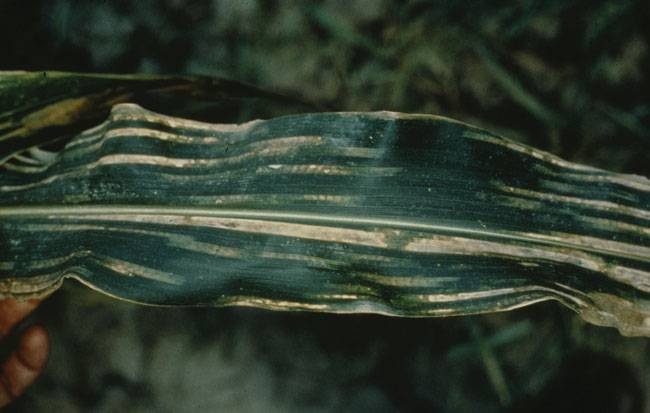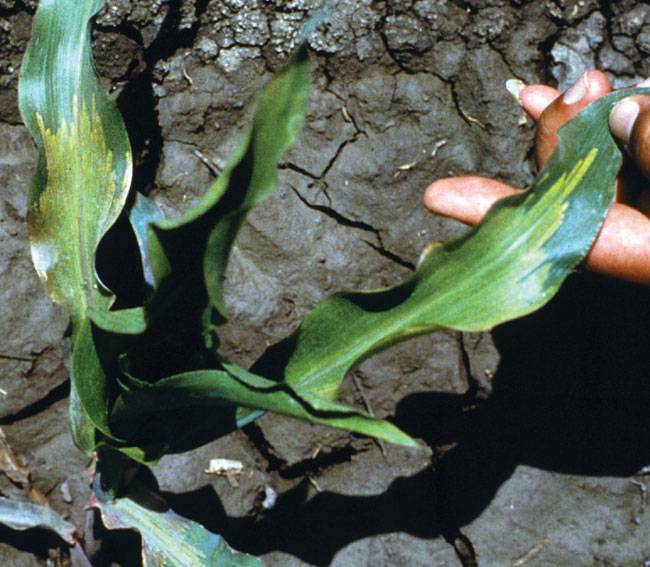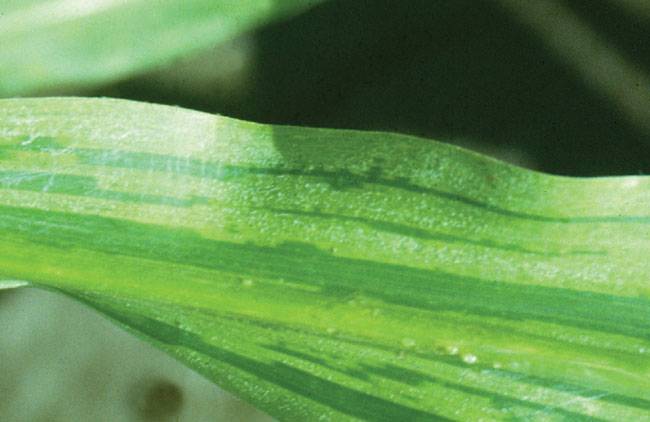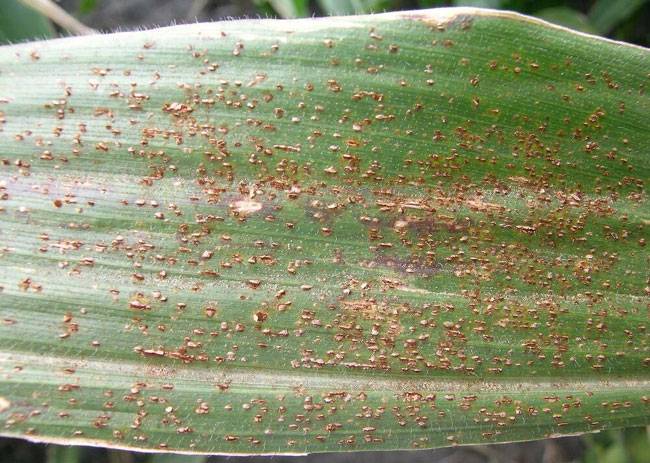Maize
Downey Midew

Pernosclespora sorghi
Fungal Disease

Pernosclespora sorghi
Fungal Disease

Pernosclespora sorghi
Fungal Disease

Pernosclespora sorghi
Fungal Disease
Downy mildew of maize is caused by various fungal pathogens, most notably Peronosclerospora sorghi. The disease impacts maize crops worldwide and is characterized by a range of symptoms that vary depending on factors such as cultivar, age of the plant, and climatic conditions. Early detection and proper management are essential to minimize yield loss and ensure healthy maize crops.
Symptoms of Downy Mildew
- Early Signs: Symptoms typically appear as early as two weeks after sowing, with the initial signs being chlorosis (yellowing) and stunting of the maize plants.
- Older Plants: As the plant matures, the disease becomes more evident with mottling, chlorotic streaking, and lesions on the leaves.
- White, Downy Growth: The leaves of infected plants exhibit a white, downy growth on both surfaces, which is a distinctive characteristic of the disease.
- Leaf Changes: Infected maize leaves become narrower, more erect, and often exhibit white striped patterns.
- Half-Leaf Symptom: One of the key diagnostic signs is the sharply defined intersection between diseased and healthy tissue, leading to the "half-leaf symptom," where part of the leaf shows chlorosis, while the rest remains unaffected.
Cause of Downy Mildew
- Fungal Pathogen: Downy mildew is caused by the fungus Peronosclerospora sorghi, which can survive as oospores in the soil and plant debris. The disease is both air- and seed-borne, making it easily spread across fields.
- Alternative Hosts: The pathogen has several alternative hosts, which contribute to its persistence and spread.
Environmental Conditions Favoring Infection
- Low Soil Temperature: Infection is favored by low soil temperatures (around 10°C) and high soil moisture levels, which promote the survival of oospores.
- Cool, Humid Weather: The pathogen thrives in cool, humid conditions, with an optimum temperature for conidia production being 18°C. High humidity (close to 100%) and exposure to light for at least four hours are crucial for the pathogen’s growth.
- Sporulation: Asexual structures, such as conidiophores and conidia, appear on the surface of diseased leaves in cool, humid weather, giving a white, down-like appearance to the leaves.
Management of Downy Mildew
- Resistant Varieties: The best way to manage downy mildew is to plant resistant maize varieties and hybrids, which can significantly reduce the incidence of the disease.
- Crop Rotation: Rotating maize with non-host crops helps break the life cycle of the pathogen and prevents soil contamination.
- Fungicide Treatment: Use systemic fungicides both as seed treatments and foliar sprays to control the disease effectively.
- Weed Control: Keeping fields free from weeds can help minimize the available reservoirs for the pathogen.
- Seed Drying: Drying seeds before sowing reduces the chances of infection.
- Humidity Control: Managing field humidity and ensuring good air circulation can help limit the conditions that favor the growth and spread of Peronosclerospora sorghi.
Disease Cycle and Spread
- Conidia Development: Conidia, the spores responsible for further infection, are produced between midnight and 5:00 AM under optimal conditions of temperature (around 20°C) and high relative humidity (85% or higher). These spores are dispersed by air currents and can cause infection on other plants within a short time frame.
- Germination Conditions: For conidia to germinate, a dew period of at least 2 hours is required at temperatures ranging from 14-22°C. The disease can still develop under a wider range of temperatures if the dew period is longer.
Conclusion
Downy mildew of maize is a serious threat to maize cultivation, especially in regions with cool, humid climates. By understanding the environmental conditions that favor the disease and implementing effective management practices, farmers can reduce the impact of this pathogen on their crops. Planting resistant varieties, using fungicides, and practicing crop rotation are key strategies in minimizing the risk of infection and ensuring a healthy maize crop.





